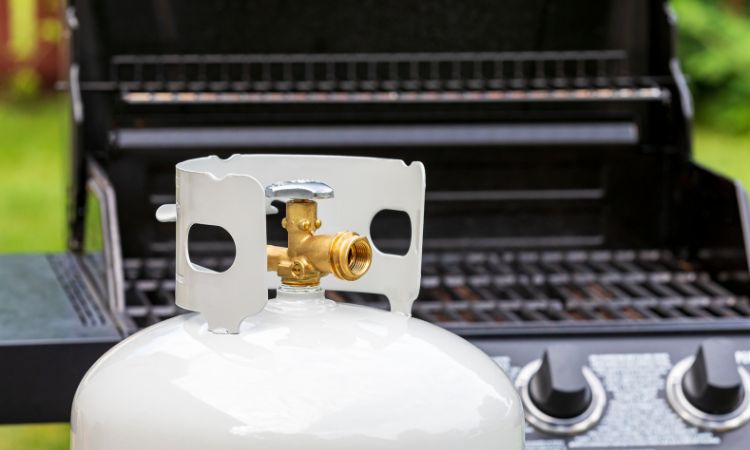
The global propane market size is expected to grow in the forecast period of 2025-2033 at a CAGR of 4%. As a versatile and efficient energy source, propane has become increasingly integral in a wide range of industries, from residential heating to industrial applications and transportation. The market's continued growth can be attributed to several key factors, including the increasing demand for cleaner, more cost-effective energy solutions, as well as technological advancements that enhance propane’s applications. In this blog post, we will explore the current state of the propane market, key trends, the segmentation of its various end-use industries, regional dynamics, and the competitive landscape, providing a comprehensive overview of what to expect in the coming years.
Market Overview
Propane is a byproduct of both natural gas processing and crude oil refining. It is primarily used for heating, cooking, refrigeration, and as a fuel for vehicles. The global propane market has experienced steady growth in recent years, driven by its widespread adoption as a clean alternative fuel source, particularly in regions where natural gas infrastructure is not accessible. Propane is also increasingly being used in transportation, as governments and industries seek cleaner alternatives to gasoline and diesel.
The market is projected to grow significantly in the coming years, with a strong focus on meeting the increasing global demand for energy, especially in emerging economies. The rising popularity of propane autogas, which is a cleaner, more cost-effective alternative to traditional fuels, further boosts its demand in the transportation sector. Additionally, propane’s role in industrial processes, its efficiency as an energy source, and its importance in residential and commercial applications all contribute to the market’s positive outlook.
Market Segmentation
The global propane market can be divided based on end-use industries, including residential, commercial, industrial, transportation, and other applications. Let’s take a deeper look into these segments and understand their impact on the overall market.
By End-Use Industry
Residential
Propane plays a vital role in the residential sector, where it is primarily used for heating, cooking, water heating, and as a backup power source. In rural and remote areas, where natural gas infrastructure is either unavailable or costly to install, propane is a reliable and affordable alternative. The residential sector's demand for propane is expected to grow steadily as more consumers seek energy-efficient heating solutions and as the trend of off-grid living continues to rise.
Commercial
The commercial sector represents a significant portion of propane consumption. Propane is used extensively in restaurants, hotels, laundromats, and other commercial establishments for cooking, heating, and refrigeration. With rising energy costs and the growing emphasis on environmental sustainability, more businesses are turning to propane as a cleaner and more affordable energy alternative. The commercial propane market is expected to grow, especially as businesses seek to reduce their carbon footprint and operating costs.
Transportation
Propane is increasingly being used as an alternative fuel for vehicles, particularly in fleet operations. Known as propane autogas, this fuel is a cleaner and more affordable substitute for gasoline and diesel. Propane autogas is widely used in buses, trucks, forklifts, and taxis, with the added benefit of reducing emissions and operating costs. The global push for cleaner air and reduced greenhouse gas emissions has led to a surge in propane adoption in the transportation sector. Government incentives, regulatory policies, and environmental concerns will likely continue driving the use of propane in commercial vehicles.
Industrial
The industrial sector is one of the largest consumers of propane, using it for a wide range of applications, including metalworking, chemical processing, and manufacturing. Propane is utilized as a fuel for industrial heating, as well as for powering machinery and equipment. Additionally, propane serves as a feedstock in the production of chemicals, including propylene, and is used in processes such as dehydration and drying in industries like agriculture. With the increasing demand for energy in industrial applications and the need for efficient fuel sources, propane’s role in the industrial sector will continue to grow.
Others
Apart from the primary sectors mentioned above, propane is also used in other applications like agriculture, recreational activities, and even as a feedstock in certain chemical processes. In agriculture, propane is used for crop drying, irrigation, and even as a fuel for tractors. The leisure industry also utilizes propane in outdoor activities such as camping, where portable stoves and heaters powered by propane are in high demand. These smaller, niche applications are expected to contribute steadily to the overall propane market.
Regional Analysis
The global propane market has a diverse set of regional drivers and opportunities, with varying levels of adoption depending on the geographic location. Let’s explore the key regions influencing the growth of the propane market.
North America
North America, particularly the United States and Canada, has historically been a dominant player in the propane market. Propane is widely used in both residential and commercial applications across these countries. In the U.S., propane is commonly used in rural areas and for applications such as heating, cooking, and water heating. Moreover, the U.S. has been leading the global transition to propane autogas, with many fleet operators adopting propane-powered vehicles as a cleaner and cheaper alternative to gasoline and diesel. Canada, with its vast and sparsely populated areas, also relies heavily on propane for heating and other energy needs.
Europe
Europe is another significant market for propane, especially in countries like the UK, Germany, and France. As part of the EU's broader efforts to reduce carbon emissions and transition to cleaner energy sources, propane’s role in both residential and industrial sectors has been growing. The use of propane as an alternative fuel in transportation is also gaining momentum in Europe, driven by regulations mandating lower emissions in the transportation sector. Moreover, countries like Russia, which are key producers of propane, are poised to drive the supply side of the market in Europe.
Asia Pacific
The Asia Pacific region is experiencing rapid industrialization and urbanization, making it a crucial growth area for the global propane market. Countries like China and India are seeing an increase in propane adoption, both in residential and industrial applications. In these emerging economies, propane is used as a cleaner, cost-effective alternative to more traditional fuels like coal and wood, particularly in rural and off-grid areas. The growth of the transportation sector in countries like China, where propane autogas is gaining traction, further drives propane demand in the region.
Latin America
Latin America is another region where the propane market is expanding. Countries like Brazil and Argentina have large agricultural sectors, where propane is used for crop drying and irrigation, and its demand is expected to continue to rise. Propane is also increasingly being used for residential heating in areas with limited access to natural gas. The adoption of propane as an alternative fuel in transportation is also gaining ground in Brazil, where fuel alternatives are being explored to reduce reliance on gasoline and diesel.
Middle East and Africa
The Middle East and Africa are relatively untapped markets for propane, although certain countries, particularly those with significant oil and gas reserves, are seeing growth in propane production and consumption. The demand for propane in industrial applications, including chemical processing and refining, is expected to increase, particularly in countries like Saudi Arabia and South Africa. Moreover, propane’s cleaner-burning properties make it an attractive option for urban transportation fleets in the region.
Market Dynamics
Drivers
- Energy Efficiency and Cost-Effectiveness: Propane’s cost-effectiveness compared to traditional fuels and its efficiency as a heating and cooking fuel are major drivers of its growing adoption worldwide.
- Environmental Benefits: Propane burns cleaner than gasoline and diesel, emitting fewer greenhouse gases and pollutants. This makes it an attractive option as governments and industries look to reduce carbon emissions.
- Government Policies and Incentives: Government policies supporting clean energy and offering tax incentives for propane-powered vehicles, as well as energy-efficient appliances, are key factors propelling propane demand.
- Rising Demand in Emerging Markets: As economic growth and industrialization continue in emerging markets, the demand for energy-efficient and affordable fuels like propane will continue to rise.
Restraints
- Competition from Other Fuels: The increasing availability and adoption of natural gas and electricity, along with renewable energy sources, pose a challenge to propane’s market share.
- Infrastructure Limitations: In some regions, the lack of infrastructure for propane storage and distribution can limit market growth.
Opportunities
- Propane Autogas Adoption: The growing adoption of propane as an alternative fuel in the transportation sector presents a major opportunity for growth, particularly in commercial fleets and public transportation.
- Energy Transition and Off-Grid Solutions: Propane’s role as an off-grid energy solution in remote areas and developing countries offers significant growth potential.
Challenges
- Price Volatility: The price of propane, linked to fluctuations in crude oil and natural gas prices, can affect market stability and pricing strategies.
- Environmental Concerns: Despite being cleaner than many traditional fuels, propane is still a fossil fuel, and the increasing focus on renewable energy sources may impact long-term demand.
Competitive Landscape
The global propane market is highly competitive, with key players such as ExxonMobil, Shell, BP, AmeriGas, and Ferrellgas dominating the supply and distribution of propane. These companies are continually working on expanding their production capacities, improving distribution networks, and offering value-added services such as propane refueling infrastructure for vehicles.
Additionally, several smaller regional players are gaining traction by catering to local markets with specialized solutions for residential, industrial, and transportation applications. Companies are also increasingly focusing on technological innovations to improve propane’s efficiency, such as advanced storage and transportation methods.

0 Comments
Post Comment